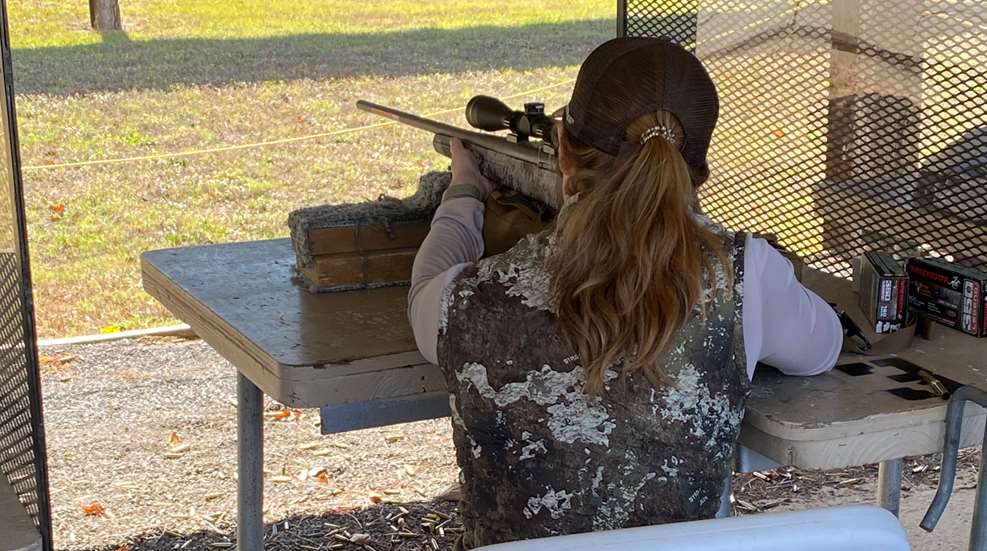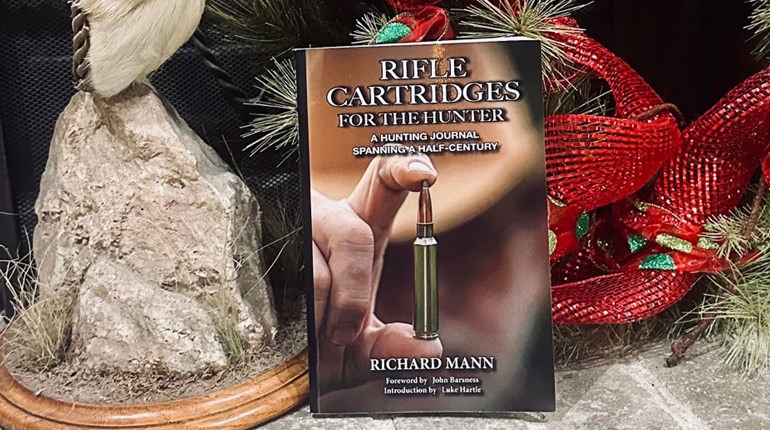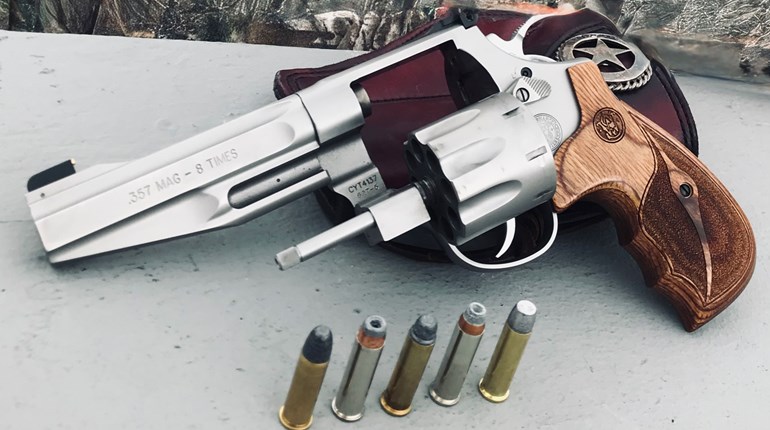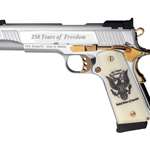
Wounding loss of game animals is a big concern for everyone involved in hunting—hunters, landowners and conservation agencies. Nobody wants to lose a game animal. There is the issue of going home without your game and worse, the animal running off and dying and going to waste. Hunters should do everything they can to reduce the chance of losing their game once the trigger is pulled and the bullet strikes the animal.
I am often contacted by individuals who need help with their rifle shooting because they have experienced losing a game animal they shot. I probably get more request for help in this area than other instructors because not only am I an NRA Rifle Instructor, I am also one of the assistant Hunter Education coordinators and the Becoming an Outdoors Woman coordinator for my state.
There are five issues I often find as the culprit for wounding loss: lack of range time; using too much gun; using too little gun; sight alignment; and ammunition issues.
Lack of Range Time
Range time is the most elementary thing a hunter can do to minimize wounding loss. Everyone agrees that you should get as much range time as possible to ensure that you are able to make a quick, clean and ethical kill. Practice is the key to success. I am not talking about just any practice; I am talking about perfect practice. Remember, it is not practice that makes perfect, but it is perfect practice that makes perfect.
Unfortunately, most hunters do not practice at the range like they used to. Nowadays, pistol ranges and long-distance ranges are popular, but your traditional ranges for hunters are a lot quieter than they used to be. As an instructor, you can teach your student the techniques they need to be successful in the field, but the rest is up to them. A successful hunter takes the initiative and takes the time to hone his or her skills at the range. The skills you develop at the range will translate to success in the field.
Too Much Gun
Telling someone that they are shooting “too much” gun is one of the hardest things to do. With many hunters, this is an area where you may find a lot of disagreement, pushback and flat-out feelings of insult. This is one of the quickest ways of losing a friend or making a student question your advice.
Not everyone can shoot every caliber, even if they know the NRA’s 5 Fundamentals when shooting a rifle (Aiming, Breath Control, Hold Control, Trigger Control, and Follow Through). Some shooters like recoil, some shooters can handle recoil, and some shooters do not like recoil. It is those who do not like recoil who often have the most trouble with large and pounding rifle calibers. Even shooters that like or can handle recoil can have issues with firearms chambered for certain calibers.
The reason some hunters have a high wounding loss of game animals is because they are using too much gun. This in turn results in a conscious or an unconscious flinch that affects accuracy. Other issues that many shooters have that affect accuracy when using large calibers is closing their eyes at the same time they pull the trigger, or quickly jerking the trigger, or not pulling and seating the butt of the rifle firmly into the shoulder.
It is important to remember that there are two types of recoils—kicking (snappy) rounds and pushing rounds. Many magnum rounds such as the 7 mm and .300 Winchester can be very snappy. Many older cartridges such as the .45-70 Govt and the .375 H&H are more of a strong and heavy push. This is why someone who likes recoil and someone who can handle recoil might have no problem shooting a .30-06 Springfield that has a strong push, but they may have problems accurately shooting a .300 WIN that is very “snappy.” In fact, I am starting to see more of the big ranches in Texas prohibiting rifles chambered in calibers such as the .300 WIN, even though it is a great round with great terminal performance, because of the frequency of wounding loss.
It is very easy to diagnose someone who is shooting too much gun—just watch them and the gun while they shoot. Watch how they mount the gun and what happens when they pull the trigger. Your diagnosis can be confirmed by having a smaller yet effective hunting round for comparison. Almost every individual that has contacted me for rifle lessons because they were having trouble with accuracy with their deer rifle, or father with sons or daughters with the same issue, always results in the same problem —shooting too much gun. I start by asking them what they are shooting, and their response is almost always a popular large caliber firearm. I always bring a good .243 WIN rifle for them to shoot as a comparison. The result is almost always the same. With the .243 WIN, they hit the bullseye with a very good grouping. When they switch to their rifle, they have no grouping, and all of their shots fall outside the bullseye or “kill zone.”
Too Little Gun
The opposite of too much gun is not enough gun. Hunting with too little gun has been an issue among hunters when the .223 Remington and the 5.56 X 45 (also known as the 556) became popular. These calibers can also be very effective in the hands of an experienced hunter. It takes knowing where the vital organs are in the animal as well as knowing the ballistics of the ammunition. Unfortunately, both young and new shooters may be familiar with the cartridge, but do not have hunting experience.
Without getting into an argument about the virtues of the 5.56 X 45 and without getting into effectiveness of the 5.56 X 45 as a hunting round, let’s just say there are better options for most game animals. It is always a good rule to match up the best cartridge with the game you are pursuing. If recoil is the issue, there are very effective cartridges that are more than adequate for most game animals yet have manageable “kick.”
If you decide to go after large game animals, it is your responsibility to use the most effective cartridge for your target species within your skill level. For example, you can kill a moose with a .22-250 Rem but very few hunters possess the skill to do so ethically. If you cannot skillfully shoot the minimum recommended caliber for the game you are pursuing, you should be mature enough to decide against the hunt.
Sight Alignment
There are many reasons why an individual does not hit what they are aiming at. One of the most common problems is that the rifle is not properly sighted in. Beginning shooters may not know that when you put a scope on a rifle, it needs to be sighted in. To do this, the windage and elevation needs to be adjusted so the crosshairs in the scope are aligned with the bore of the barrel. This allows the projectile to hit where the shooter is aiming.
Once the scope is sighted in, it needs to be checked regularly at the range. The problem comes, as mentioned above, with a lack of adequate range time. If you or your student do not regularly check the sight alignment at the range, it could be off, and this could result in wounding loss. This is because the shooter might be aiming at the vitals, but the actual impact area is in an area that does not result in a rapid kill.
Many hunters go to the range once a year before hunting season to check their sights. The problem with this is that during the year their scope gets bumped, and the sights get knocked off a “zero” alignment. As luck goes, the deer of a hunter’s lifetime walks out, the trigger is squeezed, and the bullet strikes the animal in a non-vital area. The trophy then runs off and dies and ultimately goes to waste if not recovered.
Ammunition Problems
When everything else checks out and there is no clear reason you or your student is missing their animal, check out the ammunition they are using. Make sure the ammunition that is being used when practicing at the range is the same ammunition that is used when hunting. Also, ensure that the cartridges being used are good, quality, name brand ammunition. It always astounds me when a student shows up with a beautiful $2,000 or $3,000 rifle and scope combination and then pulls out cheap and low-end ammunition to shoot.
Additionally, make sure the ammunition that you buy has the terminal performance in the application you plan to use it. For example, most ammunition manufacturers as well as conservation agencies do not recommend long-range shooting when hunting. This is because of the high probability of wounding loss. Most bullets need an 1,800-feet per second impact (on the animal) speed for the ammunition to perform as designed. That means if you are not using ammunition made for long-distance shooting and the shooter does not know the required distances, the chance of wounding and losing an animal is greater.
The terminal performance of the ammunition can make the difference between collecting your game or losing it. Just remember that the terminal performance of the bullet means nothing if you cannot get the projectile to the correct spot on the animal. There are many steps to being successful in a hunt. There are also many things that can go wrong. By being ready and preparing for your hunt, you can enhance the chances of collecting your trophy.














































